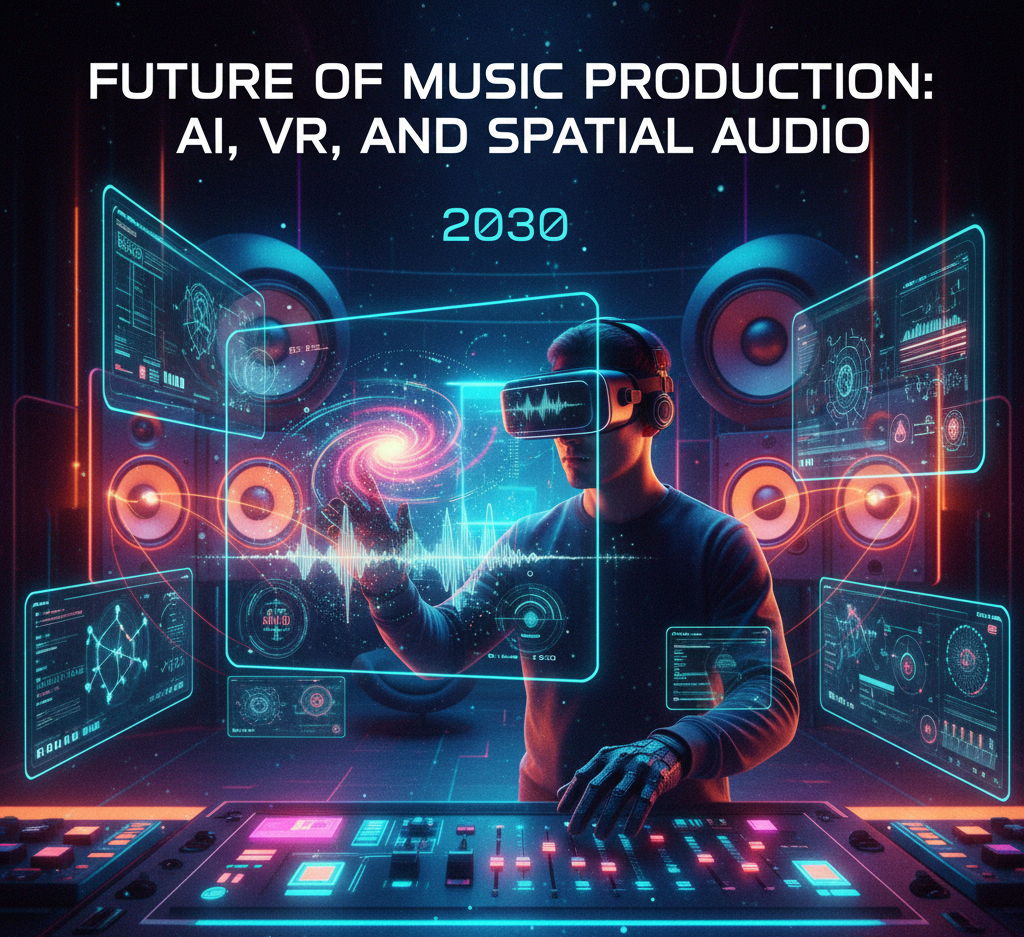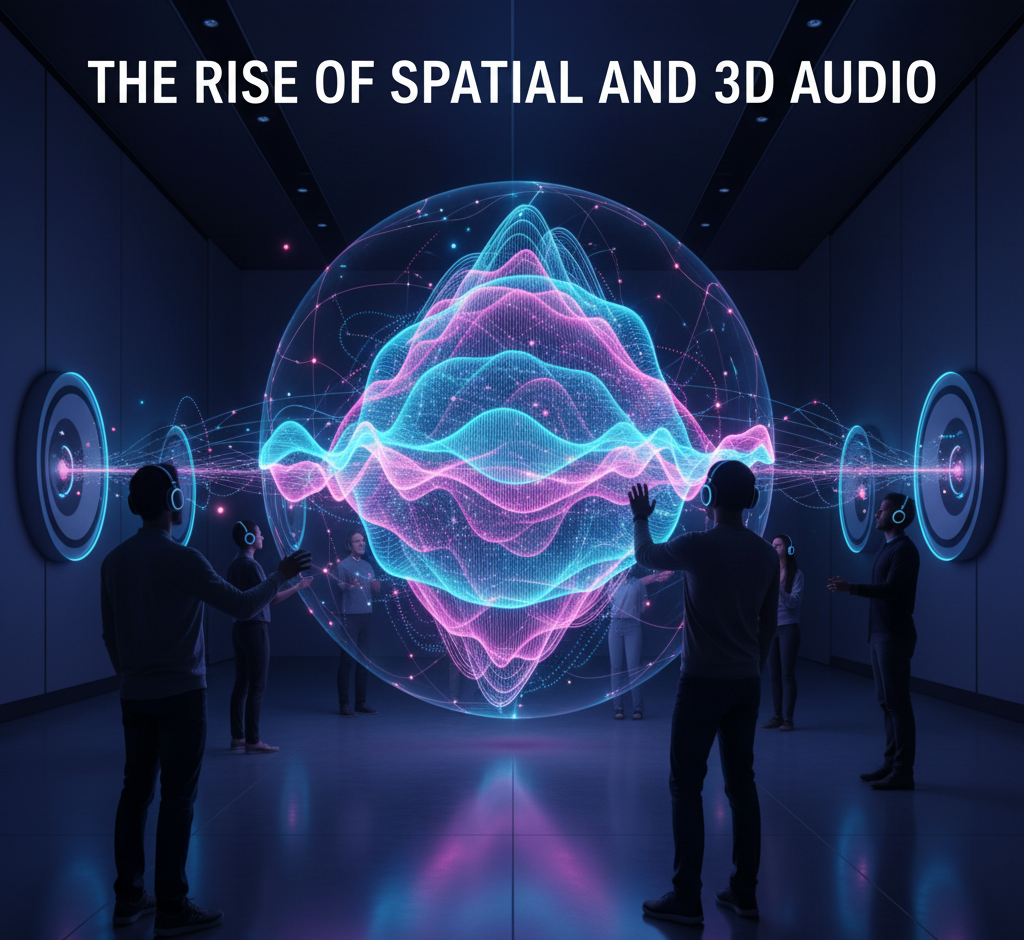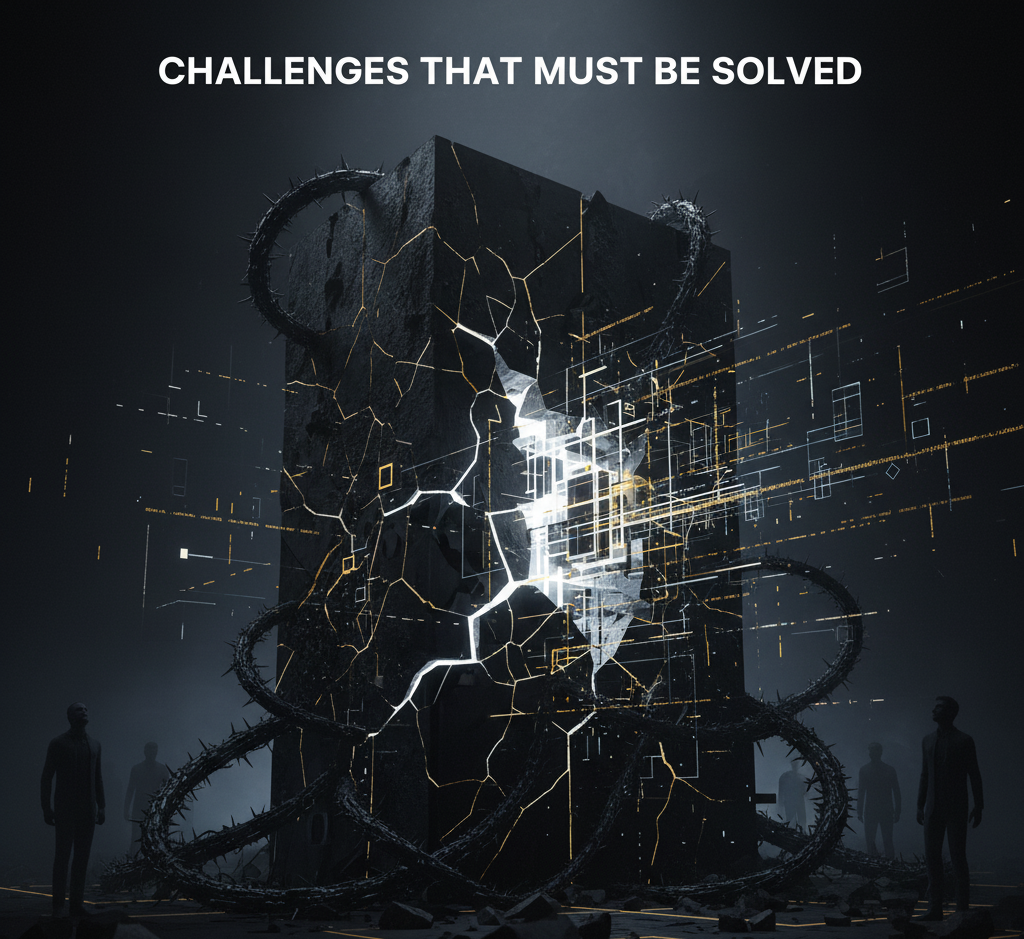A New Era for Sound
Music has always evolved alongside technology. From the electric guitar to digital sampling, from Pro Tools to streaming, every leap has reshaped the sound of culture. Now, three powerful forces are driving the next transformation: artificial intelligence, virtual/augmented reality, and spatial audio. These aren’t fringe experiments anymore, they’re rapidly becoming essential to how music is made, shared, and experienced.
How AI Is Already Reshaping the Studio
Artificial intelligence has moved beyond being a curiosity and is now part of everyday workflows for many musicians and producers.
AI tools generate compositions and vocals.
-
Research shows modern models can create harmonies, beats, and instrumentals conditioned on prompts like genre or text.
Production tasks are being automated.
-
Mixing, mastering, stem separation, and loop generation are increasingly assisted by AI. In fact, FL Studio 2025 launched with an integrated AI assistant that offers production advice inside the DAW.
The industry is adapting legally and financially.
-
Sweden’s music licensing agency STIM has already launched an AI music license framework, letting companies train AI on copyrighted works while compensating songwriters.
These facts show that AI is no longer just an experiment: it’s a tool that’s changing the business and practice of music right now.
The Rise of Spatial and 3D Audio
If you’ve noticed your favorite streaming service promoting “Dolby Atmos” or “Spatial Audio,” you’ve already seen where the industry is heading.
-
The global 3D audio market was valued at $7.18 billion in 2024 and is projected to hit $38.36 billion by 2033.
-
Streaming platforms, headphones, VR headsets, and even car systems are racing to support immersive playback.
-
More artists are releasing albums in Atmos or binaural formats, offering listeners a surround-sound experience with just a pair of headphones.
Spatial audio isn’t a gimmick, it’s fast becoming the default way people expect to hear music.
Virtual Reality and Immersive Performance
Virtual concerts have been tested by major artists for years, but as VR and AR hardware improves, the line between the “stage” and the “screen” is blurring.
-
In VR environments, spatial audio gives fans a sense of “being there,” with sound responding to head movement and location.
-
Remote collaboration tools are expanding, allowing artists and engineers to work in virtual studios across continents.
-
Gaming and music are merging into hybrid experiences, where music isn’t just heard but interacted with.
This isn’t the future, it’s already happening, and adoption is accelerating.
Challenges That Must Be Solved
For all its promise, the road to 2030 isn’t free of obstacles.
-
Bias in AI training data risks over-representing certain genres and underrepresenting others.
-
Copyright disputes are already making headlines as AI-generated tracks flood platforms.
-
Fragmented standards in spatial audio could confuse consumers and slow adoption.
-
Audience trust is fragile: listeners want to know what’s authentically human versus what’s generated by a machine.
These challenges will determine how smooth (or bumpy) the road to 2030 will be.
EngineEars: A Platform Built for This Future
One platform already preparing creators for this shift is EngineEars.
EngineEars connects artists with verified engineers and studios while streamlining the messy back end of music creation (file transfers, revisions, payments, and credits). The platform already supports services ranging from two-track mixes and mastering to Dolby Atmos mixes, and even offers a Dolby Atmos Certification course.
As spatial audio becomes a standard expectation, EngineEars’ support for immersive mixing is a critical bridge for independent artists. Its education programs and verification system ensure that not only are engineers trained for the future, but that artists know they’re working with trusted professionals. By 2030, platforms like EngineEars could become essential for connecting the dots between human creativity, AI-powered tools, and immersive formats.
What to Watch Between Now and 2030
The next five years will be pivotal. Expect to see:
-
AI models becoming lightweight enough for real-time, on-device use.
-
Streaming platforms offering widespread spatial audio playback.
-
More robust licensing systems for AI training and distribution.
-
Artists experimenting with VR/AR-first releases and interactive music.
The Bottom Line
The future of music production won’t just sound different, it will feel different. AI will speed up workflows and unlock creativity. Spatial audio will turn songs into environments. VR and AR will make performances more immersive than ever.
For artists and fans alike, the next decade is less about replacing what came before and more about expanding what music can be. The tools are already here. By 2030, they’ll be unavoidable.
What do you think? Will AI and spatial audio expand creativity, or threaten authenticity? Share your thoughts in the comments.


